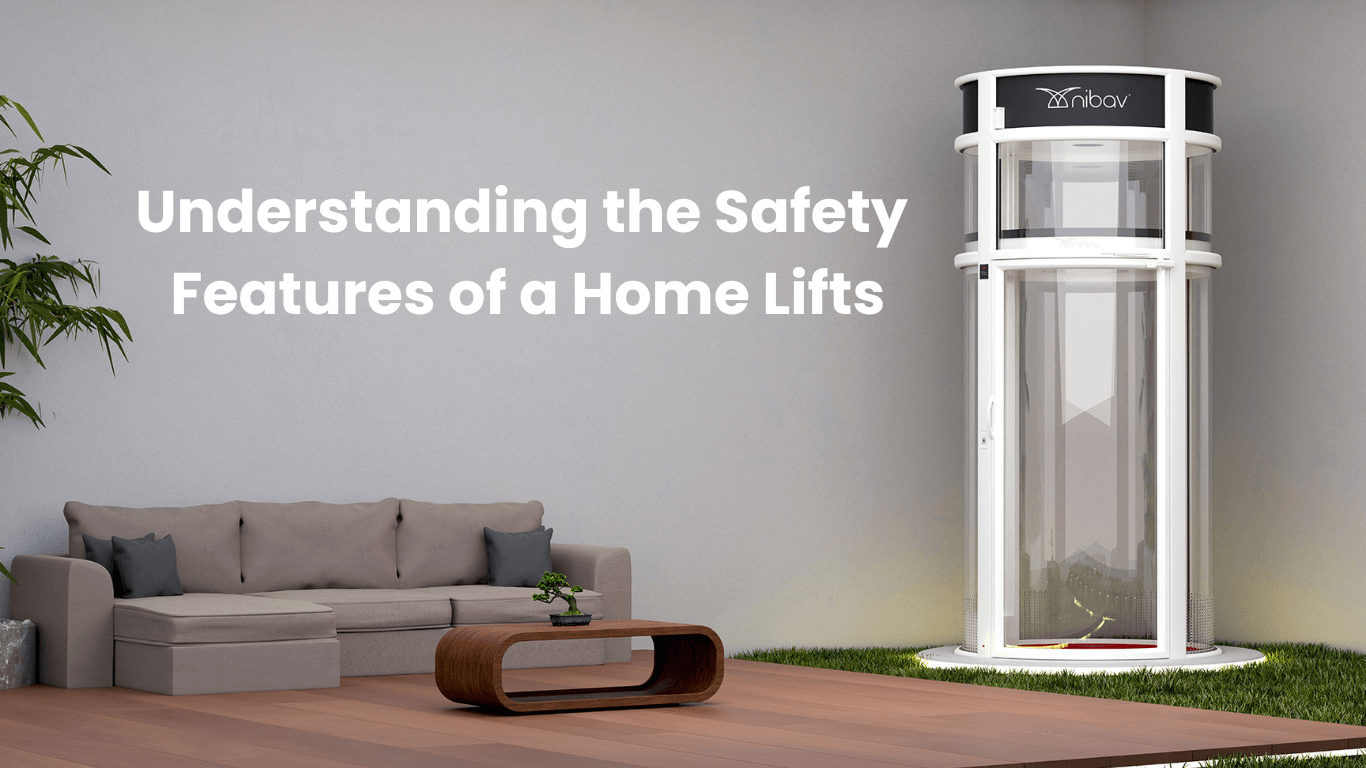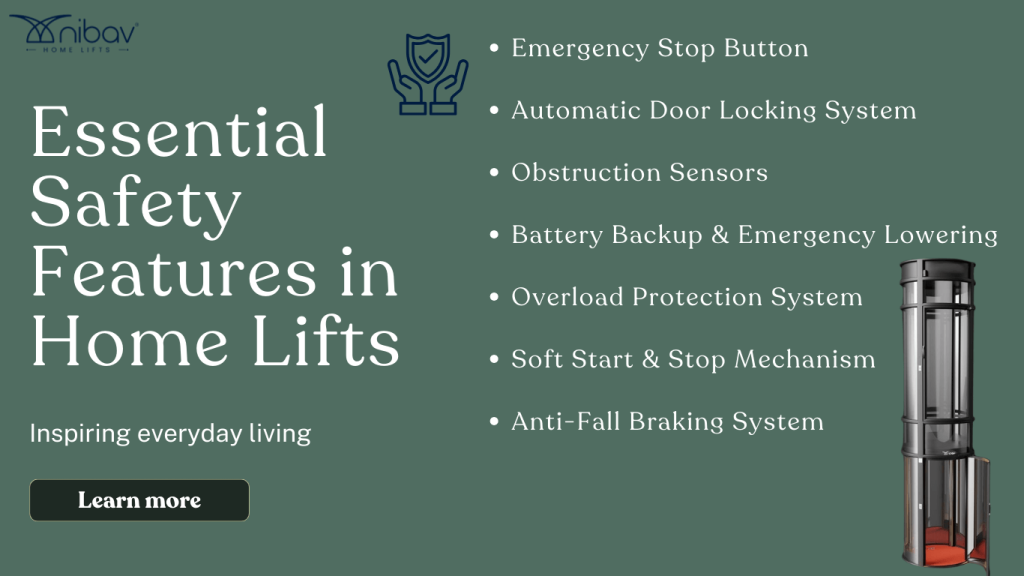Table of Contents
Introduction:
As the demand for home lifts in Australia grows, ensuring safety and compliance is more important than ever. With an aging population and increasing focus on modern convenience, homeowners are investing in secure, reliable lift solutions.
This guide explores essential home lift safety features in Australia, including emergency stop functions, backup power systems, auto doors, and strict compliance with Australian standards. Understanding these features helps homeowners make informed decisions while ensuring peace of mind.
Read on to discover the key safety measures and regulations that protect Australian homeowners when installing a home lift.
Why Home Lift Safety Matters?
Many household owners ask, “Are home lifts safe?” The answer is yes – when correctly designed and installed, home lifts are incredibly safe and reliable. Security is necessary to prevent accidents, ensure access and provide peace of mind, especially for elderly and dynamic persons.
Common concerns include sudden stops, power failures and entry, but modern lifts eliminate risks from emergency stop buttons, backup power, auto-locking door and smooth braking system. The real-world cases suggest how these characteristics fall and ensure a spontaneous ride. Investment in an obedient, high-quality home lift guarantees both safety and convenience.
Essential Safety Features in Home Lifts:
Modern home lift safety features ensure smooth operation and accident prevention. Key features include:
- Emergency Stop Button – Instantly halts the lift in case of issues.
- Automatic Door Locking System – Prevents accidental openings while in motion.
- Obstruction Sensors – Stops the lift if an object or person is detected.
- Battery Backup & Emergency Lowering – Ensures safe descent during power failures.
- Overload Protection System – Prevents operation if the weight exceeds capacity.
- Soft Start & Stop Mechanism – Provides smooth movement for safety and comfort.
- Anti-Fall Braking System – Prevents dangerous free-fall situations.
These features make home lifts safe, reliable, and secure for everyday use.
Australian Safety Regulations for Home Lifts:
Understanding home lift regulations in Australia is crucial for ensuring compliance and safety. Key regulations include:
AS1735 Compliance – Covers lift safety standards, ensuring proper design, installation, and operation.
AS1735.18 for Home Lifts – Specifies requirements for residential lifts, including size, weight capacity, and emergency features.
Building Codes & Permits – Homeowners must obtain permits and adhere to local building regulations before installation.
Comparison to International Standards – Australian laws align with global safety benchmarks but emphasize higher safety measures for residential settings.
Following these regulations guarantees safety, reliability, and legal compliance for home lift installations. Our Home lifts follows European and Global standards.
Compliance Checklist for Home Lift Installations:
Ensuring home lift installation compliance is essential for safety and legal approval. Follow this checklist:
Pre-Installation Safety Requirements:
- Select the right lift type based on home layout and needs.
- Check building structure compatibility to support the lift system.
During Installation:
- Only qualified technicians should handle the installation.
- Conduct regular safety checks and load tests for compliance.
Post-Installation:
- Ensure emergency access and proper exit points.
- Schedule routine maintenance for long-term safety and performance.
Following these steps guarantees a safe, efficient, and legally compliant home lift installation.
Common Mistakes That Affect Home Lift Safety:
It is important to avoid home lift security mistakes for long-term reliability and prevention of accidents. General errors include:
- Skipping regular maintenance – Ignoring servicing can cause breakdown and safety threats.
- Not following the weight range – Overloading the lift strains the motor and increases the risk of mechanical failure.
- Ignoring emergency processes – Homeowners should know how to respond to power failures or malfunctions.
- Using non-transport installers– Hiring professionals with licenses can lead to unprotected installation and legal issues.
By addressing these issues, the owners of the house ensure a safe, skilled and long-lasting home lift system.
Best Home Lift Brands with Advanced Safety Features:
When looking for the best safe home lifts Australia, these top brands offer cutting-edge safety features and reliable performance:
Home Lifts Melbourne – Custom-built lifts with top-tier safety compliance and emergency features.
Nibav Home Lifts – Compact, pneumatic-powered lifts with built-in emergency descent systems for added security.
These brands provide modern, secure, and efficient home lift solutions across Australia.
Maintenance Tips to Keep Your Home Lift Safe:
Regular home lift maintenance is essential for safety, longevity, and smooth performance. Follow these key home lift maintenance tips:
- Service Frequency – Schedule professional servicing every 6 to 12 months to prevent issues.
- DIY Safety Checks – Regularly inspect buttons, doors, and lights for proper function.
- Warning Signs – Watch for unusual noises, jerky movements, or slow operation, as these indicate maintenance needs.
- Annual Professional Inspections – A certified technician should inspect the lift at least once a year for safety compliance.
Proper maintenance ensures a reliable and secure home lift experience.
Home Lift Safety FAQs:
1. Are home lifts safe for children and elderly individuals?
Yes, modern home lifts include safety sensors, emergency stop buttons, and automatic doors for enhanced protection.
2. What happens if my home lift stops working?
Most lifts have battery backups, emergency lowering systems, and alarm buttons to ensure safety during power failures.
3. Can home lifts be installed in existing homes safely?
Yes, compact and retrofittable designs allow safe installation with minimal structural modifications.
4. Do home lifts have fire safety measures?
Yes, they include fire-resistant materials, automatic shutdown, and emergency evacuation systems for added protection.
5. How do I make sure my home lift remains compliant?
Schedule regular professional inspections, follow manufacturer guidelines, and adhere to Global safety standards.
Conclusion: Why Safety is Non-Negotiable for Home Lifts:
When investing in a home lift, safety should be the top priority. Choosing a lift with advanced safety features, regular maintenance, and compliance with Global standards ensures long-term reliability and protection. Safe Home Lifts Australia offer emergency stop buttons, obstruction sensors, and battery backups for added security.
To ensure peace of mind, homeowners should only trust certified and compliant providers.
Looking for a safe and compliant home lift? Contact Home Lifts Melbourne today for expert guidance and a tailored lift solution that meets the highest safety standards!


